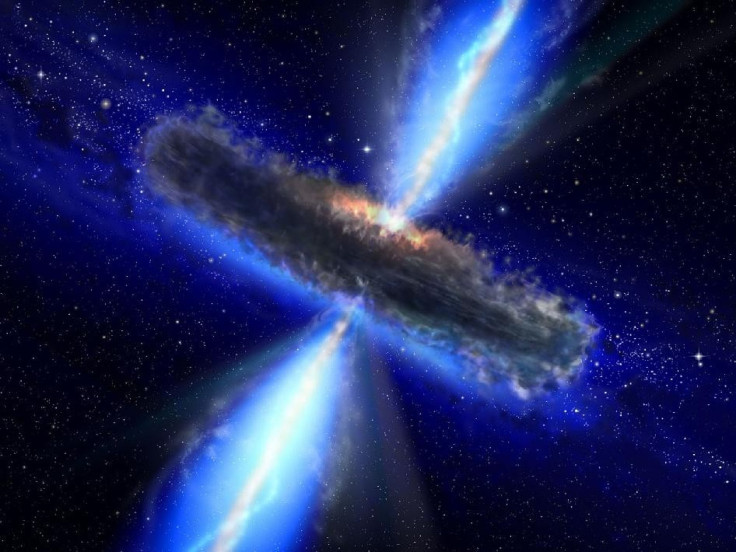Largest, Farthest Water Reservoir Found is Enough to Fill Earth's oceans More than 100 Trillion Times

Two teams of astronomers discovered what they believe is the largest and farthest reservoir of water ever detected in the universe. The team includes the California Institute of Technology and the University of Colorado Boulder.
The water measured in the quasar is in the form of vapor and is the largest mass of water ever found, the researchers said. The amount of water estimated to be in the quasar is at least 100,000 times the mass of the sun, and is equivalent to 34 billion times the mass of the Earth, a press reelase stated.
The distant quasar is one of the most powerful known objects in the universe. Its energy output is 1,000 trillion sun, which is about 65,000 times that of the Milky Way galaxy.
The quasar's power comes from matter spiraling into the central supermassive black hole, estimated at some 20 billion times the mass of our sun, according to the study's leader Matt Bradford of Caltech and NASA's Jet Propulsion Laboratory in Pasadena, Calif.
Quasar's light has taken 12 billion light years to arrive at Earth because the quasar, which is essentially a hungry black hole, is so far away. The observations therefore, reveal a time when the universe was very young, perhaps only 1.6 billion years old, as astronomers believe the universe was formed by the Big Bang roughly 13.6 billion years ago.
These findings are very exciting, said Jason Glenn, a study co-author, and a University of Colorado Boulder associate professor, in a statement. We not only detected water in the farthest reaches of the universe, but enough to fill Earth's oceans more than 100 trillion times.
Bradford said the water measurement, together with measurements of other molecules in the vapor source, suggests there is enough gas present for the black hole to grow to about six times its already massive size. But it is unclear whether it will grow that large because some of the gas may end up forming stars instead, or be cast out from the quasar host galaxy in an outflow.
The discovery was made with a spectrograph called Z-Spec operating in the millimeter wavelengths at the Caltech Submillimeter Observatory, a 10-meter telescope near the summit of Mauna Kea, on the big island of Hawaii.
Researchers were able to confirm this discovery from images obtained by the Combined Array for Research in Millimeter-Wave Astronomy, or CARMA, a sensitive array of radio dishes located in the Inyo Mountains of Southern California. The distant quasar under study is named APM 08279 5255.
© Copyright IBTimes 2024. All rights reserved.






















